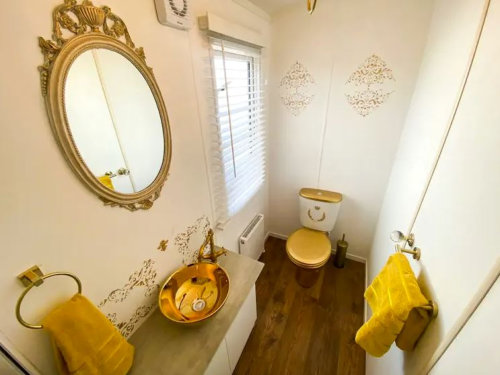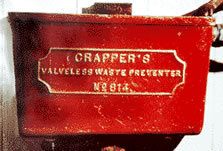| Tags | topical blogs how to guides buyer's guides product news buyer's guide buyers guides buyers guide topical guides show all posts |
Thrones Fit for Royalty

When considering thrones fit for Royalty, it is interesting to take a look at the history of the toilet. Between the 1500s and 1700s, our Royalty would appoint a Groom of the Stool. It was the Groom of the Stool's job to talk to the King or Queen whilst they, to put it simply, sat on the throne performing the most private of tasks. The toilet back then was a velvet-cushioned wooden box, which sat above a chamber pot. The Groom of the Stool would set up this toilet throne, and also dispose of the waste.
Where did the nickname Throne for a Toilet come from?
The toilet bowl got its nickname, “the throne,” in the Middle Ages. In castles, what we consider today a toilet, would be in an isolated room. Only the rulers in the castle would have access to this toilet (or long drop). Therefore, sitting on the "toilet" was likened to a King sitting on a throne. The treatment was fit only for a king (or fit for Royalty). Hence the association.
The Coronation of King Charles III and Queen Camilla
The first Coronation of this Century is ready to take place this weekend, on the 6 May, 2023. King Charles III will literally take his seat on his throne this weekend, next to his Queen Camilla. This is the first coronation of the 21st Century after our Queen Elizabeth II reigned over the United Kingdom and the commonwealth for over 70 years. When thinking about how the toilet of King William III differs from the toilet that King Charles III will use today, we will look at thrones fit for Royalty.

King Charles III and Queen Camilla prior to their Coronation
Traditional High Level Toilets
It is widely believed that the flushable toilet was designed by Thomas Crapper in the 1860s. IT was actually several hundred years earlier that Queen Elizabeth I’s Godson designed a flushable toilet. Therefore, the first member of Royalty to have a flushable toilet was Queen Elizabeth I. Widely ignored for centuries, the flushable toilet started to come into commonplace by the late 1800’s during the reign of Queen Victoria.
Victorian and Edwardian toilets featured a raised cistern hung high on the wall. The downpipe would allow gravity to release the water into the toilet bowl to flush away the toilet's contents. King Edward VII instructed Thomas Crapper to construct lavatories in many royal palaces. The “Crappers” became a commonplace of what we know as the toilet in the modern age.
If you are looking to adopt the styles and the elegance of the aristocracy and Royalty from the Edwardian and Victorian ages, then look no further than Burlington High-Level Toilets that give that touch of class & elegance, giving nods to the traditional theme, yet with modern technological advancements. The High-Level Toilet looks purely stunning, especially when paired with gold piping and finishes, as well as throne toilet seats or toilet seats with gold hinges & handles.
How many toilets are there in Buckingham Palace?
Buckingham Palace became the official London home to the Royal Family in 1837. Buckingham Palace has 775 rooms with 78 bathrooms. Therefore the number of toilets within Buckingham Palace will be at least 78.
With a mix of styles, from modern rimless close coupled toilets to traditional high-level toilets, there are many types of toilets in Buckingham Palace. So what makes thrones fit for Royalty? It was once rumoured that King Charles would take his toilet seat wherever he went so that the toilet could fit his needs. King Charles quashed these rumours live on Australian Radio.

Recreating a bathroom and a throne fit for Royalty
For many of our readers and those in love with the Victorian, Georgian and Edwardian styles of period bathrooms, there is a wonder of how to recreate these styles. Recreating a royal bathroom of the era gone by and having a toilet fit for Royalty (a throne fit for Royalty) inspires many interior designers.
The traditional bathroom has grown in popularity in the years, with brass fixtures & fittings or gold piping. The ornate lighting and brackets holding high-level cisterns up on the wall and mosaic or patterned floor tiles give the true traditional feel. These, alongside freestanding baths, all contribute to this traditional themed elegant bathroom only found in stately homes or royal palaces at the turn of the 20th Century.
The vast quantity of traditional toilets at Westside Bathrooms allows you to create your own royal throne fit for a King. Whether opting for one of our Burlington Toilets or Burlington Toilet Seats to finish off the look, we have it all! Other High-Level traditional toilets are brought to you from Tavistock and Roper Rhodes.
To accompany the toilet, the next fixtures that our customers look for are the basin and faucets to match these. The Burlington Basins have all the classic design features to recreate Edwardian, Victorian or other period eras. Purchase matching Burlington Basin Taps to complement the vintage basins to complete that look in Chrome, Gold or Nickel.
Traditional Vanity Units are back in style from leading brands such as Burlington, Kartell and Roper Rhodes. These Vanity Units feature the pastel colours of the turn of the 20th Century, the shaker style doors and intricate, ornate details.
Finally, the freestanding bath is the cornerstone of a traditional bathroom, especially the slipper-style bath. Especially when paired with the ornate feet that often feature claws or a lion.
Why Shop at Westside Bathrooms?
Westside Bathrooms has been trading for nearly 40 years and provides a full range of bathroom products, including showers, enclosures, sanitaryware, furniture and Brassware. Westside Bathrooms can help supply you with the best products on the market, whatever your needs, budget, style or inspiration. So if you wish thrones fir for Royalty, shop no further than Westside Bathrooms.
We have a team of customer service staff who can help you with your order, give advice and answer any questions. Call 01472 266100 or contact via e-mail at info@westsidebathrooms.co.uk for any help at any stage of your buying journey.



